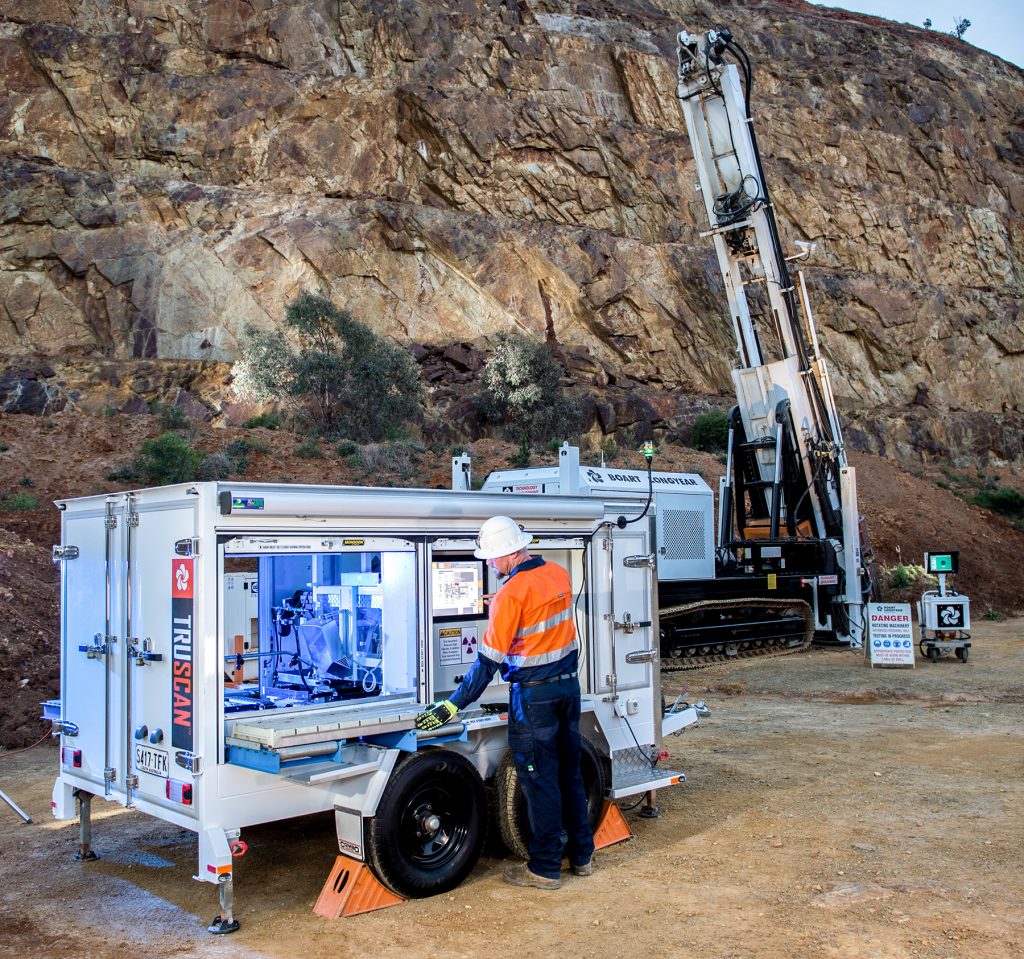Boart Longyear is launching a new technology called TruScan™ for elemental and photo scanning of core at the exploration site, providing geologists access to near real-time geological data as the core is drilled. Utilising innovative XRF technology specifically built to scan rock, TruScan is designed to provide same-day continuous analysis of the drill core and quickly provide non-destructive, accurate, high-density elemental concentration data.
In addition, TruScan offers high-definition wet, dry, and scan-spot photos (to scale) of the retrieved rock core. This information can be quickly viewed by the geologist and aids in the logging and interpretation of the geology—more accurate conceptual geological models can be built while the drill is still on the borehole. Because the time to collect data is significantly reduced, exploration and mining companies can make accurate and timely decisions on where to drill next or to what depth, thus lowering the costs of collecting and analysing data.
“While traditional lab assay techniques and portable x-ray fluorescence (pXRF) devices have been available to mining clients for some time, there are limitations to these technologies. Lab analytical techniques often come with time delays and costs associated with sample processing, shipping and analysis. Many handheld pXRF devices available today use fundamental parameters which can be inaccurate due to limitations in calibration.”
TruScan uses a unique XRF technology to address textural variations in rock and site-specific calibrations to address the rock type specific matrix effect. To ensure more precise onsite readings, rock samples are sent first from the site to the lab for chemical analysis. Once received back, the resulting chemistry is used to calibrate TruScan’s XRF technology, which is performed by a qualified Boart Longyear geochemist prior to the unit being sent to the drill site.
Because it has been previously calibrated, TruScan does not require the operator to have knowledge of XRF analysis. TruScan can be operated by the drill crew, removing the need for additional staff on site. No additional staff onsite both minimises the cost to deploy this technology and keeps onsite environmental health and safety (EHS) related risk low. In addition, this technology is designed to fit into the normal workflow of Boart Longyear drill crews so there is no decrease in drilling productivity.
The innovative TruScan technology has been successfully tested in Canada and Australia and is now commercially available as part of Boart Longyear’s drilling services. In the current application, the unit is mounted on a ruggedised “mine specification” trailer designed to travel with the drill rig and can be towed to most locations where core drilling is being conducted. In areas where a trailer wouldn’t be practical, the unit is designed to also accommodate skids to enable being dragged through the bush, or mobilised by helicopter to a remote drill site.











